Related Research Articles

The Laptev Sea is a marginal sea of the Arctic Ocean. It is located between the northern coast of Siberia, the Taimyr Peninsula, Severnaya Zemlya and the New Siberian Islands. Its northern boundary passes from the Arctic Cape to a point with co-ordinates of 79°N and 139°E, and ends at the Anisiy Cape. The Kara Sea lies to the west, the East Siberian Sea to the east.

The Arctic convoys of World War II were oceangoing convoys which sailed from the United Kingdom, Iceland, and North America to northern ports in the Soviet Union – primarily Arkhangelsk (Archangel) and Murmansk in Russia. There were 78 convoys between August 1941 and May 1945, sailing via several seas of the Atlantic and Arctic oceans, with two gaps with no sailings between July and September 1942, and March and November 1943.

Valerian Ivanovich Albanov was a Russian navigator, best known for being one of two survivors of the Brusilov expedition of 1912, which killed 22.

Sadko was a Russian and Soviet icebreaker ship of 3,800 tonnes displacement. She was named after Sadko, a hero of a Russian bylina.

Nikolay Nikolayevich Urvantsev was a Soviet geologist and explorer. He was born in the town of Lukoyanov in the Lukoyanovsky Uyezd of the Nizhny Novgorod Governorate of the Russian Empire to the family of a merchant. He graduated from the Tomsk Engineering Institute in 1918.
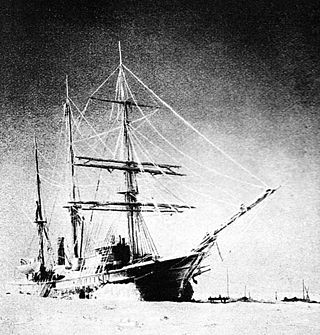
Zarya was a steam- and sail-powered brig used by the Russian Academy of Sciences for a polar exploration during 1900–1903.
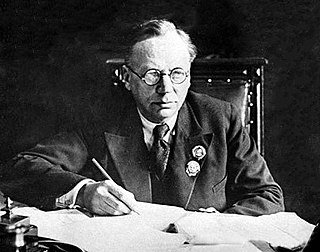
Vladimir Yulyevich Wiese was a Russian scientist of German descent who devoted his life to the study of the Arctic ice pack. His name is associated with the Scientific Prediction of Ice Conditions theory. Wiese was a member of the Soviet Arctic Institute and an authority on polar oceanography. He was also the founder of the Geographico-hydrological School of Oceanography.

Vladimir Ivanovich Voronin was a Soviet Navy captain, born in Sumsky Posad, in the present Republic of Karelia, Russia. In 1932 he commanded the expedition of the Soviet icebreaker A. Sibiryakov which made the first successful crossing of the Northern Sea Route in a single navigation without wintering. This voyage was organized by the All-Union Arctic Institute.

The Komsomolskaya Pravda Islands are an archipelago in the far north of the Russian Federation. The islands are uninhabited and are covered with tundra vegetation, shingle and ice.

The icebreaker Fyodor Litke was active in the Soviet era in the Arctic, until the late 1950s. It was built in 1909 in England for the Saint Lawrence River service and initially named CGC Earl Grey after Albert Grey, Governor General of Canada. After four years in Canada it was sold to the Russian government and eventually renamed Fyodor Litke in honour of the Arctic explorer Fyodor Petrovich Litke.
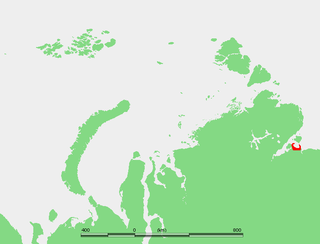
Nordvik was a settlement and a harbour-port in Krasnoyarsk Krai, Russian SFSR, Soviet Union, located on the Khatanga Gulf at the mouth of the Khatanga River, on the Uryung Tumus Peninsula, west of Nordvik Bay.
Steamer Tovarishch Stalin was a Soviet freighter of about 3,100 tonnes displacement, active in the Arctic during the 1930s.
SS Volodarskiy was a Soviet freighter of about 3,100 tonnes displacement which was active in the Arctic during the 1930s. This ship had been normally used for carrying timber.

Nordvik Bay is a gulf in the Laptev Sea in the north of Russia. Lat 73° 45' and long 112°.
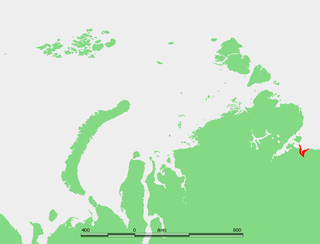
Anabar Bay is a gulf in the Laptev Sea. Lat 74° 30' and long 113° 15'. It stretches between the eastern cape off the mouth of the Anabar River and the Nordvik Peninsula. Nordvik Bay lies further west of it, beyond Cape Paksa at the tip of the peninsula.

Maria Pronchishcheva Bay is a body of water in Krasnoyarsk Krai, Russian Federation.
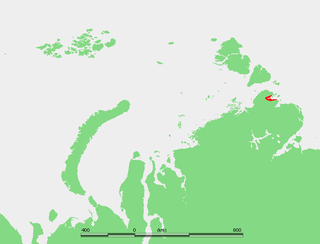
The Simsa Bay or Bay of Sims is a gulf in the Laptev Sea on the coast of the Taymyr Peninsula.

Fyodor Andreyevich Matisen was an officer of the Russian Imperial Navy, hydrographer, and explorer.
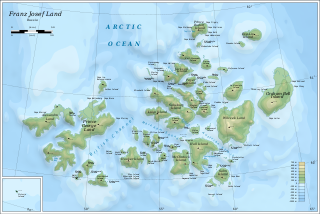
Franz Josef Land, an uninhabited archipelago located in the Arctic Ocean, Barents Sea and Kara Sea, may have been discovered by the 1865 expedition of the Norwegian sealing vessel Spidsbergen captained by Nils Fredrik Rønnbeck. However, the discovery was never announced and the existence of the territory only came to public notice following the Austro-Hungarian North Pole Expedition of 1872, which named the archipelago in honor of Franz Joseph I of Austria. Benjamin Leigh Smith led the next expedition in 1880, which continued the work of the first expeditions in investigating the southern and central parts of the archipelago. Concurrent expeditions followed in 1896, Nansen's Fram expedition and the Jackson–Harmsworth Expedition, which met by accident. These two journeys explored the northern area and the flanks of Franz Josef Land.
References
- Barr, William (June 1982). "The First Soviet Convoy to the Mouth of the Lena" (PDF). Arctic . 35 (2): 317–325. doi:10.14430/arctic2331.